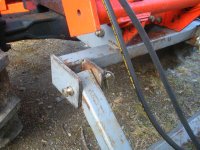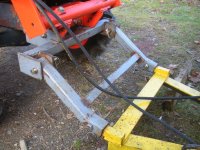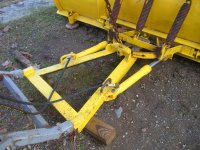Man, this setup is so hokey I'm embarrassed to show it. But anyway, here it is. The plow frame had been modified by some previous owner, so I just extended it to the tractor and used a couple of pins for attachment and lift swivel. I had to make the setup the day before a big storm, so there wasn't a lot of engineering put into it. I figured I'd change it later - but it's still working, so I've never bothered.









